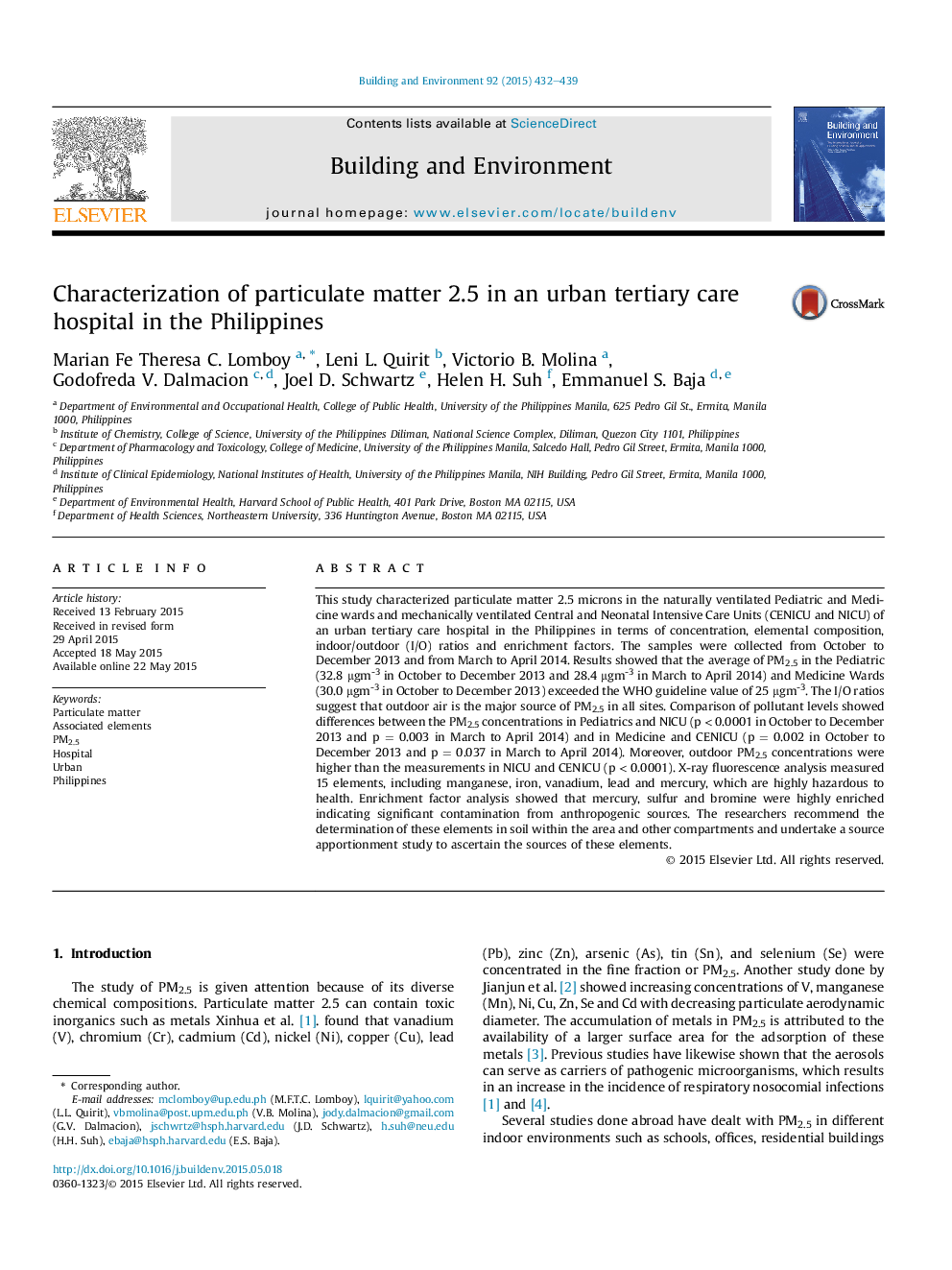| Article ID | Journal | Published Year | Pages | File Type |
|---|---|---|---|---|
| 6699800 | Building and Environment | 2015 | 8 Pages |
Abstract
This study characterized particulate matter 2.5 microns in the naturally ventilated Pediatric and Medicine wards and mechanically ventilated Central and Neonatal Intensive Care Units (CENICU and NICU) of an urban tertiary care hospital in the Philippines in terms of concentration, elemental composition, indoor/outdoor (I/O) ratios and enrichment factors. The samples were collected from October to December 2013 and from March to April 2014. Results showed that the average of PM2.5 in the Pediatric (32.8 μgm-3 in October to December 2013 and 28.4 μgm-3 in March to April 2014) and Medicine Wards (30.0 μgm-3 in October to December 2013) exceeded the WHO guideline value of 25 μgm-3. The I/O ratios suggest that outdoor air is the major source of PM2.5 in all sites. Comparison of pollutant levels showed differences between the PM2.5 concentrations in Pediatrics and NICU (p < 0.0001 in October to December 2013 and p = 0.003 in March to April 2014) and in Medicine and CENICU (p = 0.002 in October to December 2013 and p = 0.037 in March to April 2014). Moreover, outdoor PM2.5 concentrations were higher than the measurements in NICU and CENICU (p < 0.0001). X-ray fluorescence analysis measured 15 elements, including manganese, iron, vanadium, lead and mercury, which are highly hazardous to health. Enrichment factor analysis showed that mercury, sulfur and bromine were highly enriched indicating significant contamination from anthropogenic sources. The researchers recommend the determination of these elements in soil within the area and other compartments and undertake a source apportionment study to ascertain the sources of these elements.
Related Topics
Physical Sciences and Engineering
Energy
Renewable Energy, Sustainability and the Environment
Authors
Marian Fe Theresa C. Lomboy, Leni L. Quirit, Victorio B. Molina, Godofreda V. Dalmacion, Joel D. Schwartz, Helen H. Suh, Emmanuel S. Baja,
